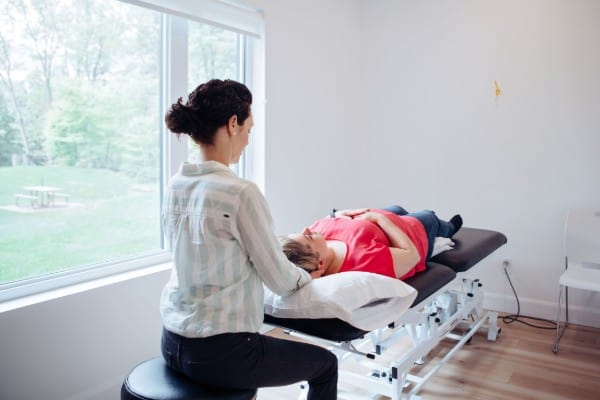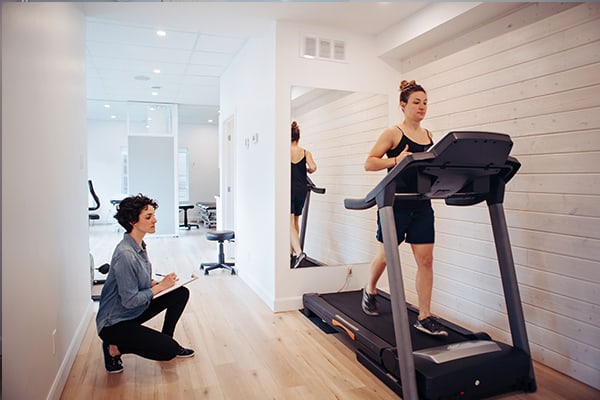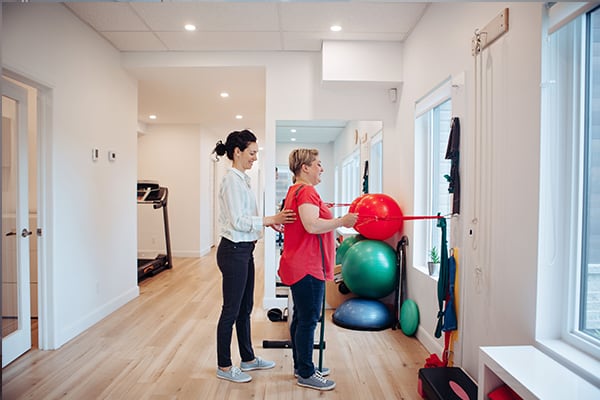Physiotherapy services
Physiotherapy is a profession within the healthcare field. Physiotherapists work in three principal areas:
- musculoskeletal problems (bones, muscles, ligaments and joints)
- neurological problems
- cardio-respiratory problems
Physiotherapy clients range in age from 0 to 100 years old!
Techniques and approach
- Manual therapy
- Gait analysis
- Postoperative rehabilitation
- Postural evaluation
- Vestibular rehabilitation: benign paroxysmal positional vertigo (BPPV)
- Myofascial release
- Motor control
- Cranial approach (ex: headaches)
- Neuro-proprioceptive Taping
- Physiotherapy dry needle puncture
- Yogatherapy
Manual therapy
Manual therapy is a postgraduate continuing education program at the Association Québécoise de Physiothérapie Avancée (AQPMA). The program teaches a better understanding of patient concerns and how to master more advanced treatment techniques.
Manual therapy helps restore mobility, movement quality and motor control of the joints. Passive mobilization, manipulation, myofascial and muscle relaxation, as well as muscle control exercises are some of the techniques used in manual therapy.


Gait analysis
The physiotherapist trained by the runner’s clinic assesses the way you walk or run on a treadmill for injury prevention and/or treatment. Depending on the runner’s needs and specific situation several aspects will be covered such as: biomechanics, foot fall pattern, cadence, the force of impact on the ground, shoe type, the running program, the surface, and progression. A training program is developed to help you return to running safely.
Who is physiotherapy for?
Physiotherapists work with athletes, manual labourers, seniors, children, students, as well as more serious cases such as polytrauma victims, car accident victims, paralysis and heart patients.
Physiotherapists also treat patients with less serious but just as uncomfortable conditions such as tendonitis, back and neck pain, sprains, fractures, sciatica nerve pain, etc.

The consultation with a physiotherapist
What does the treatment plan consist of?

A collaboration that benefits you!
Finally, the physiotherapist works in close collaboration with other health professionals: physicians, osteopaths, acupuncturists, occupational therapists, nurses, psychologists, nutritionists, etc., in order to optimize the patient’s rehabilitation and quality of life.
